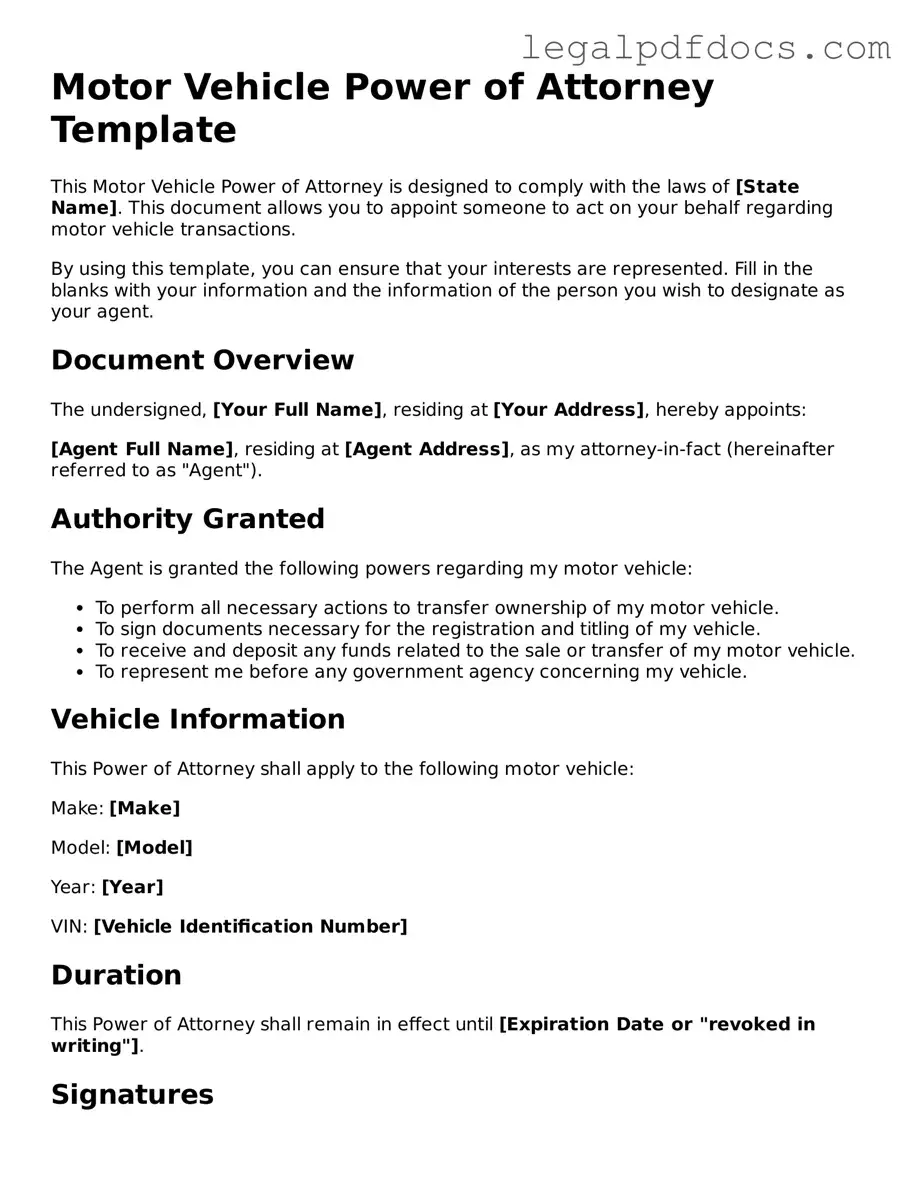When it comes to managing motor vehicle transactions, the Motor Vehicle Power of Attorney (POA) form serves as a vital tool for vehicle owners. This legal document empowers an individual, known as the agent or attorney-in-fact, to act on behalf of the vehicle owner in various matters related to the vehicle. These matters can include transferring ownership, registering the vehicle, or handling title issues. The form is particularly useful in situations where the vehicle owner is unable to be present for these transactions, whether due to geographical constraints, health issues, or time limitations. By designating an agent, the vehicle owner can ensure that their interests are represented and that necessary tasks are completed efficiently. Additionally, the Motor Vehicle POA is generally straightforward to complete and can be tailored to fit specific needs, providing flexibility in how authority is granted. Understanding the implications of this form is crucial for anyone looking to navigate the complexities of vehicle ownership and transfer, making it an essential resource in the realm of motor vehicle management.
